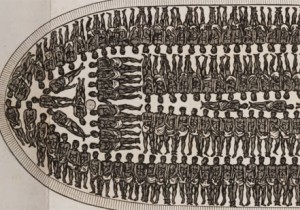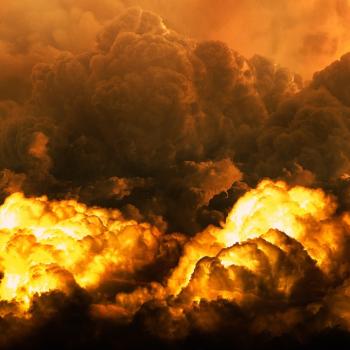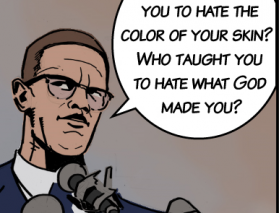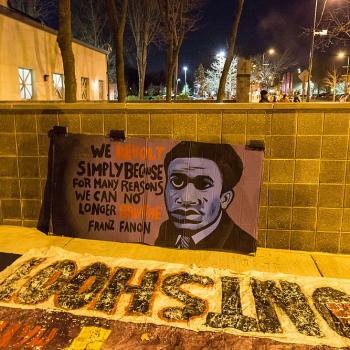Part One: Islamophobia and Anti-Blackness: The Historical Connection pt. 1
Part Two: Licutan’s Affirmation of Bilal & the idols of Anti-Blackness. (pt 2)
Hijrah and Marronage
For  Black Muslims who had been captured and kidnapped to the western hemisphere, they would be separated from the classical tasfir texts of Ibn Kathir, the hadith collections of Imam Bukhari, and, most significantly, the textual transcriptions of the Qur’an. Yet, the Islamic scholarly tradition is heavily predicated upon an oral tradition that places a heavy emphasis on memorization, and West Africa was no exception to this. Black Muslims who endured the Middle Passage would still have the mental fortitude to reproduce Islamic texts even under the most horrifying of social conditions to the dismay and shock of white slave owners.
Black Muslims who had been captured and kidnapped to the western hemisphere, they would be separated from the classical tasfir texts of Ibn Kathir, the hadith collections of Imam Bukhari, and, most significantly, the textual transcriptions of the Qur’an. Yet, the Islamic scholarly tradition is heavily predicated upon an oral tradition that places a heavy emphasis on memorization, and West Africa was no exception to this. Black Muslims who endured the Middle Passage would still have the mental fortitude to reproduce Islamic texts even under the most horrifying of social conditions to the dismay and shock of white slave owners.
Jamaican Maroons
A letter from a white magistrate visiting a sugar plantation in Jamaica, reads, “One of them showed me a Koran written, from memory by himself but written, he assured me, before he became a Christian. I had my doubts on this point.” Even under the bondage of slavery, enslaved Africans reproduced the text of the Qur’an. However, in order to survive in a world hostile to their faith, many Muslims would openly profess Christianity while believing in Islam in their hearts.
The Qur’an, which many African Muslim slaves had memorized, is replete with verses urging Muslims to flee from persecution, pointing to the spacious nature of God’s earth. One such ayat in An-Nisa 4:97 reads, “….Was, then, God’s earth not spacious enough for you to forsake the domain of evil?” Hijrah, or ‘flight from persecution,’ is an Islamic practice that began when the Prophet Muhammad’s (PBUH) early followers forsake the domain of evil in Mecca and established their own Muslim polity, beginning in Ethiopia and then Medina. Prophetic precedences would guide the ways in which African Muslims would fight slavery.

Describing the impact that such ayats in the Qur’an had on slaves, historian Dr. Afroz Sulanta writes that “hijra from the plantations led many of them to form their own community, known as Maroon communities.”
One such Jammacian Muhammad Kaba would even wrote a book titled “The Book of Prayer” instructing the community of believers in Jamaica on the importance of maintaining their daily prayers.
Another Arabic document found circulating among Jamaican Muslims,”exhorted all followers of Mohamet tobe true and faithful, if they wished to go to heaven.”
Hijrah empowered African Muslims to escape the brutalities of the slave system and to resist the efforts of white plantation owners to eradicate their faith. The maroon communities enabled African Muslims and Africans of other indigenous faiths to forge their own societies free from the hegemony of white plantation owners. Despite the horrifying situation that Africans Muslims experienced, they still sought to remain faithful to the Prophet Muhammad and exhibited high levels of faith in their freedom struggles.
Muslims among Haitian Rebels
An ayat in the Qu’ran in 16:110 that would have been deeply relevant to Muslim Maroons states,”“for those who became fugitives after they had been persecuted, and then fought and were steadfast – lo! thy Lord afterward is (for them) indeed Forgiving, Merciful..”
In Haiti, fugitive slaves formulated independent communities in the mountainous regions of Haiti and subsequently began organizing attacks against white plantation owners, which prompted French military intervention.
Maroon leader Francois Makandal is described in the Encyclopedia of Slave Resistance and Rebellion as “an erudite Muslim who wrote Arabic very well.” Living in the mountains, Makandal organized slaves to carry out a series of attacks on French Crops before he was captured and burned at the stack.
A French colonel recounted that, “During the wars I was obliged to do against the blacks, we often found written papers in the bags or macoutes of the few Negroes we killed…Nobody understood those writings. It was Arabic.”
The Islamic centers of learning in West Africa which taught Arabic allowed slaves to communicate in a language indecipherable to whites in order to carry out acts of sabotage and resistance.
The Persecution of African Muslims
An even deeper historical antagonism that impacted enslaved Muslim in the Americas is furthered highlighted by Sigmund Koelle, a Germany missionary in Sub-Saharan Africa in the 19th century. In his polemic against Islam, Koelle writes,”“Mohammedanised Africa became the stepping-stone for invading Christian Europe from the west.” In is from ‘Mohammedanised Africa,’ that a 700 year old Muslim state would exist in Europe, one that would only fall with the Reconquista in 1492.
As such, the African Muslim has a relationship with Spain which predates modernity. Even prior to the slave trade, “Mohammadanised Africa’ came to represent a villainous force in the mind of many Europeans who began to spread their Islamophobia into the Americas. The Spanish passed laws seeking to minimize the importation of African Muslims into the Americas. The Wolof, an African Muslim ethnic group, was ordered to be deported out of Chile. The Spanish were concerned about attempts of Africans to spread Islam to Indians, but also, according to African historian Jeffrey A. Fortin. “black Muslim resistance to slavery.”
In the end though, did this resistance fail? In the next article, we will examine how despite the complete eradication of Islam among Black descendants of slaves in the ‘new world,’ it was still able to remerge and impact the black freedom struggle in the post-slavery era.
————















